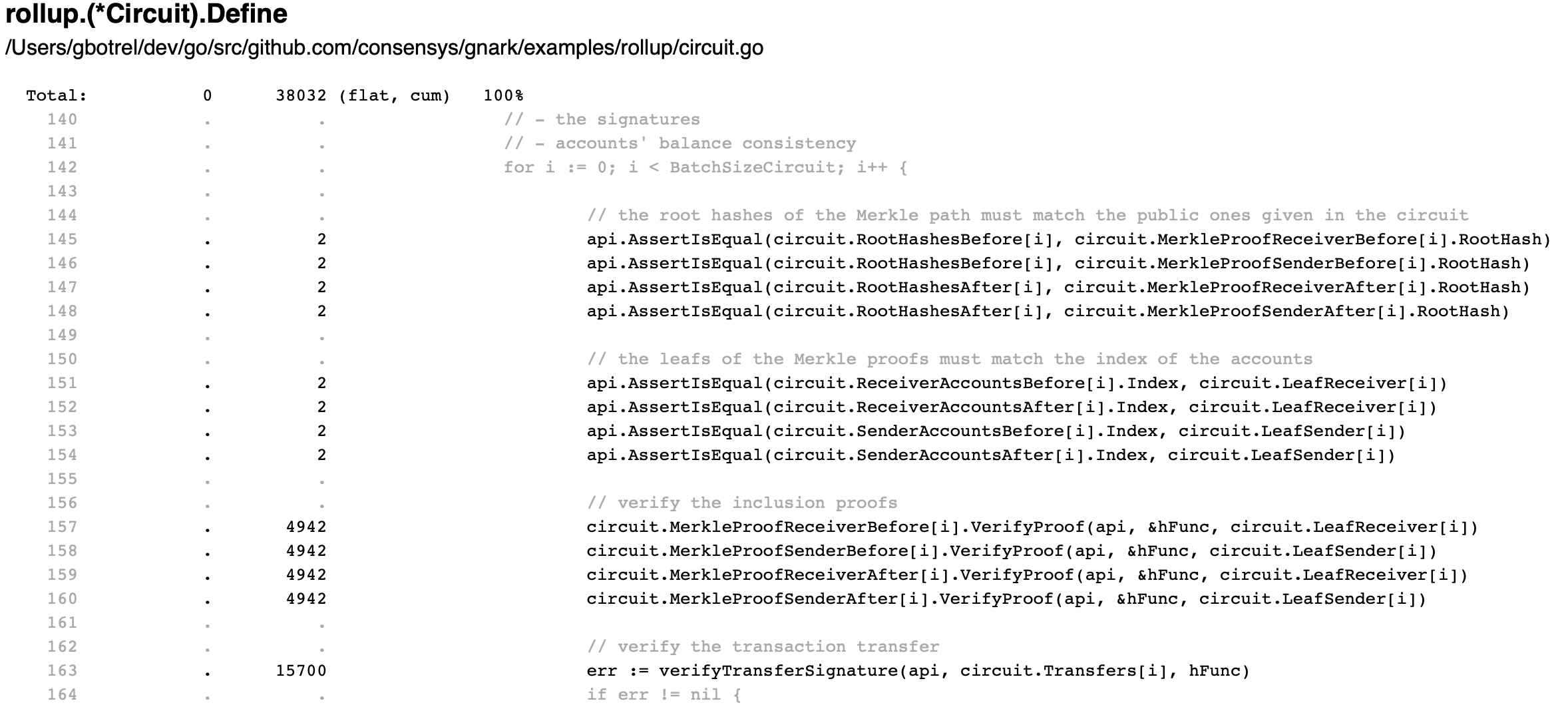Profile circuits
In the Performance we emphasize the importance of minimizing the number of constraints.
gnark/profile is a profiling package, which creates pprof compatible profiling files. Once the .pprof file is generated, one can visualize it using go tool pprof like standard Golang CPU or Memory profiles.
A gnark Profile measures the number of constraint added in a circuit.
Usage
type Circuit struct {
A frontend.Variable
}
func (circuit *Circuit) Define(api frontend.API) error {
api.AssertIsEqual(api.Mul(circuit.A, circuit.A), circuit.A)
return nil
}
func Example() {
// default options generate gnark.pprof in current dir
// use pprof as usual (go tool pprof -http=:8080 gnark.pprof) to read the profile file
// overlapping profiles are allowed (define profiles inside Define or subfunction to profile
// part of the circuit only)
p := profile.Start()
_, _ = frontend.Compile(ecc.BN254.ScalarField(), r1cs.NewBuilder, &Circuit{})
p.Stop()
fmt.Println(p.NbConstraints())
fmt.Println(p.Top())
// Output:
// 2
// Showing nodes accounting for 2, 100% of 2 total
// flat flat% sum% cum cum%
// 1 50.00% 50.00% 2 100% profile_test.(*Circuit).Define profile/profile_test.go:17
// 1 50.00% 100% 1 50.00% r1cs.(*r1cs).AssertIsEqual frontend/cs/r1cs/api_assertions.go:37
}
Example pprof constraint graph for a Pairing-check circuit

Example pprof source code mapping for example/rollup circuit
With fine granularity, we identify the number of constraints generated by each line of code:
